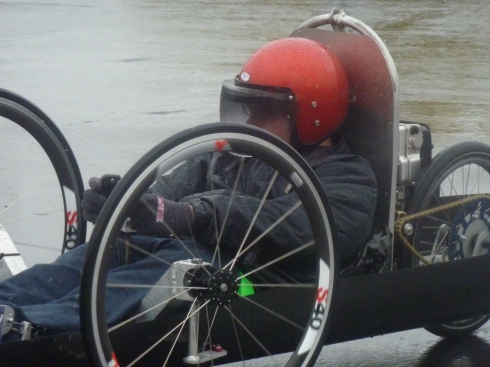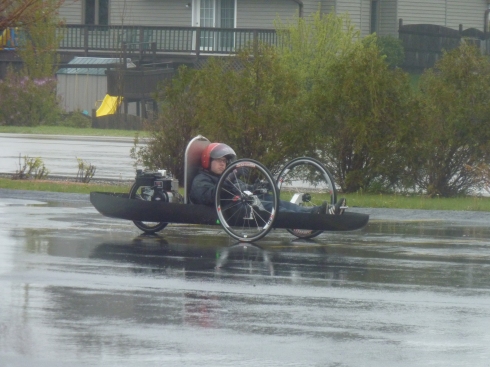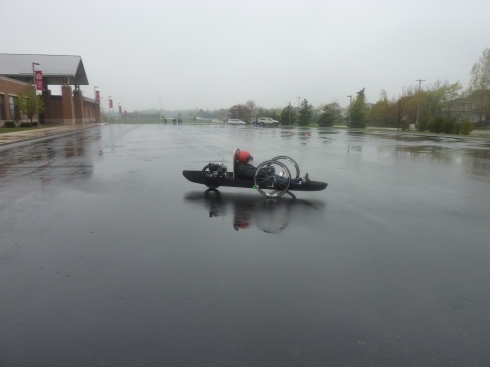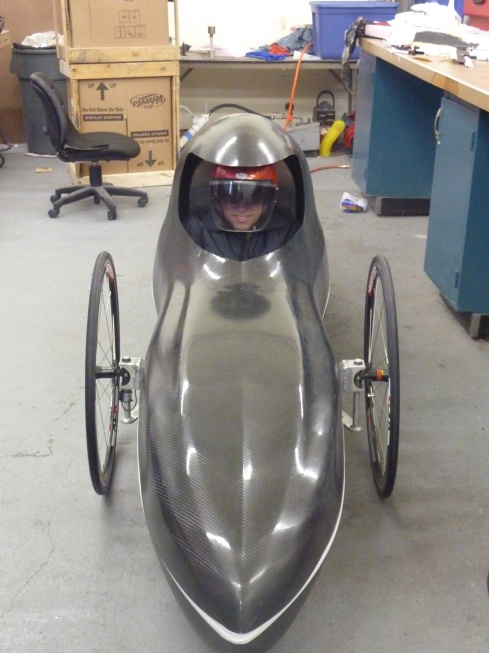When I was younger, I was on track to become a professional dirt bike racer.
All right, maybe that’s not entirely true. However, some other people in my life did want me to try to be a dirt biker, reasoning that there were fewer girls than guys racing dirt bikes so I had a better chance at getting sponsored and making money off the deal. Good plan, except that I’m a terrible dirt bike rider who is scared of going above 15 mph, crashes through jumps, and occasionally tries to twist the throttle backwards.

Not your average motorcycle...
Needless to say, my professional career never took off. However, looking at Zero Motorcycles, maybe it’s time I reconsider the whole dirt biking thing.
The company represents the “ultimate electric motorcycle technology.” Considering the impressive background of the founder, Neal Saiki, this isn’t surprising. He’s an aeronautcal engineer by trade, but his ultimate passion has always been motorcycles. Over the years, Saiki has worked to design high-performance mountain bikes in between his time as a NASA engineer.
Now, he’s at the helm of a company that produces electric dirt bikes, sport bikes, and dual sport bikes.
Let’s delve into some specs. The sport bike weighs 270 pounds, a range of 50 miles, and a top speed of 67 mph. As you can imagine, the gas mileage is impressive; the motorcycle is certified to obtain the equivalent of 455 mpg, which comes in at a cost of less than one cent per mile. The sport bike puts out 26 hp and 98 pound-feet.
The dirt bike models feature ultra-lightweight frames – each a mere 13 pounds – and can provide about two hours or 40 miles of ride time before the battery needs to be recharged. All told, the motocross model weighs in at 172 pounds and the trail bike at 161 pounds (weights even I might be able to manage).

Made of 100% aircraft-grade aluminum
One of the perks (or drawbacks) of an electric bike? It’s quiet. There’s just the hum of an electric motor instead of an ear-splitting two-stroke motor or the roar of a Harley. This is good for people like me, who get freaked out by loud noises, but also has significant downfalls. Many people who ride motorcycles like the noise; it’s tough, intimidating, and let’s people know you’re coming, an important part of motorcycle safety, especially in this age of distracted drivers.
Electric motorcycles have been developed unsuccessfully over the years, never really taking off due to heavy batteries and engines. But Saiki knew where to look for the technology to make electric bikes happen: in the military, where he also spent some time working in aerospace. Small, super-powerful motors were used in torpedoes and other weaponry, and when the technology became available to the public, Saiki jumped on it. He also credits his success to the recent developments in lithium-ion batteries. Added bonus: these bikes can be plugged right into normal outlets!

Picture this parked next to your Honda CRF250R
Protecting the environment was a big motivation for Saiki, whose bikes emit less than 1/8 of the CO2 as gas motorcycles and about 1/100 the NOx. In addition, the bike’s materials are almost completely recyclable, including the battery. Concerns of electric fire risks are greatly reduced by the Z-Force™ Air Induction System, which lets more airflow get into the engine and improves performance in addition to its safety benefits.
As a bonus, routine maintenance costs are diminished. However, the initial price is pretty steep – about $10,000 for a street bike, although buyers are eligible for a 10% tax credit and other states have larger incentives in place, too. If you’re in California, you’re eligible for $1,500 more back, thanks to Governor Schwarzenegger.
So will I hop on a Zero motorcylcle and recapture my racing dreams? Not in the near future. While I’m sure there’s a market for these bikes (think affluent, environmentally-conscious city commuters), I’m not sure if the average motorcycle rider will jump aboard this wagon anytime soon. Just as with cars, there’s a lot of associations attached with each vehicle.











 Are we okay with this? Are we okay with painful accidents like the Deepwater Horizon and others in the fossil fuel world, such as the
Are we okay with this? Are we okay with painful accidents like the Deepwater Horizon and others in the fossil fuel world, such as the 








